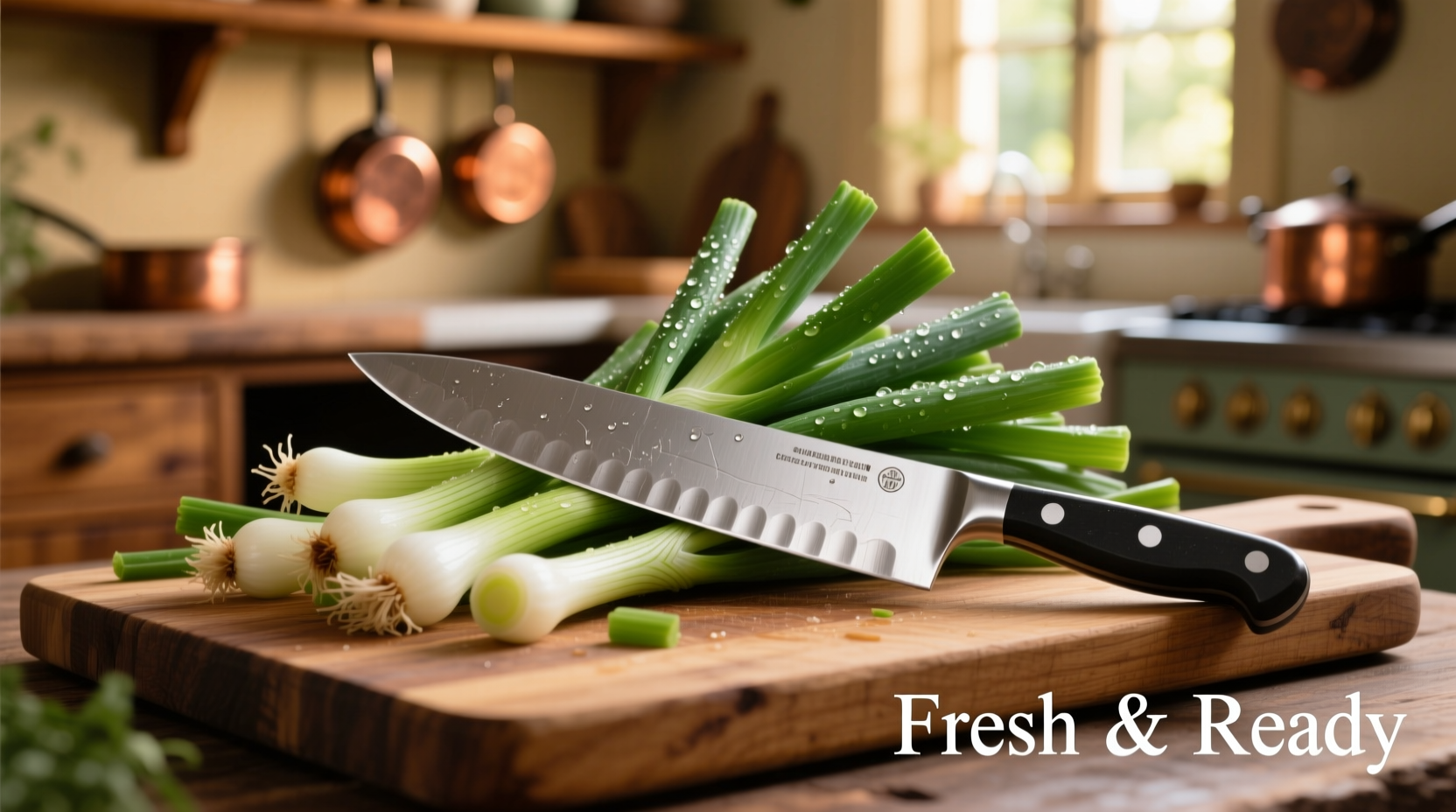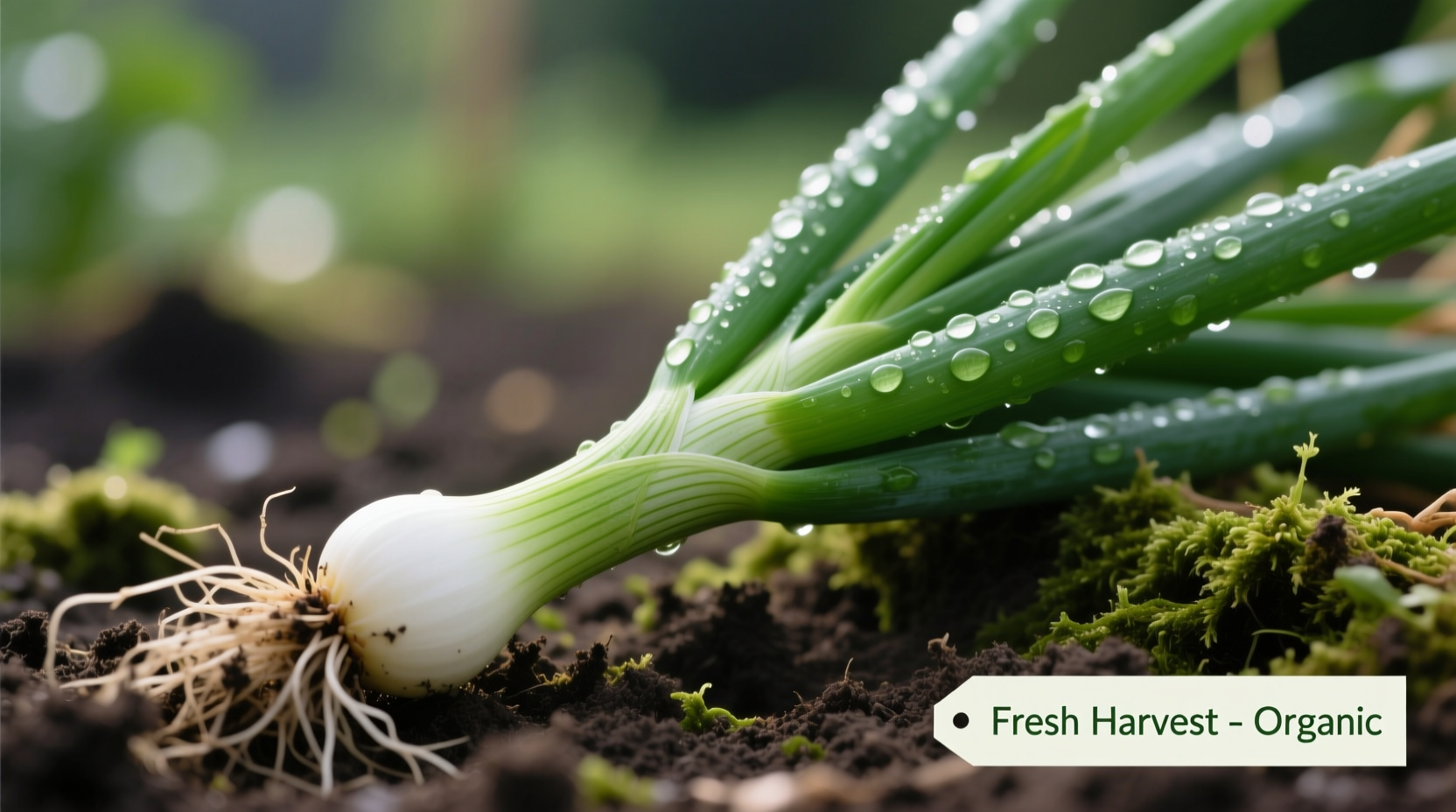When you reach for green onions at the grocery store, you're grabbing one of the most versatile alliums in culinary history. Unlike mature onions, green onions offer a delicate balance of flavor that enhances dishes without dominating them. Professional chefs rely on their dual-texture composition—the sharper white base and milder green tops—to build layered flavors in everything from Asian stir-fries to Mexican salsas.
What Exactly Are Green Onions?
Green onions (Allium fistulosum) are immature onions harvested early in their growth cycle, typically 60-80 days after planting. Unlike bulb onions that develop large underground storage organs, green onions maintain slender cylindrical shapes with minimal bulb formation. Their distinctive feature is the seamless transition from crisp white roots to hollow green stalks, each portion offering unique culinary properties.
The white section contains higher concentrations of sulfur compounds, delivering a sharper, more pungent flavor perfect for building flavor foundations. The green portion provides a grassier, milder taste ideal for finishing dishes. This dual-characteristic makes them indispensable for creating flavor depth in professional kitchens.
| Allium Type | Harvest Stage | Bulb Development | Flavor Profile | Best Culinary Uses |
|---|---|---|---|---|
| Green Onions | Immature (60-80 days) | Minimal bulb | Sharp white base, mild green top | Raw garnishes, quick-cooked dishes |
| Spring Onions | Transitional stage | Small bulb forming | Sweeter, more complex | Grilling, roasting, raw applications |
| Chives | Flowering stage | No bulb | Grassy, delicate | Finishing garnish, creamy dishes |
| Leeks | Mature | Elongated cylindrical | Sweet, subtle | Slow-cooked dishes, soups |
This comparison clarifies why many home cooks confuse these alliums. According to USDA agricultural data, green onions account for over 65% of all specialty onion sales in American markets, reflecting their popularity in everyday cooking.
Nutritional Powerhouse in Disguise
Don't let their delicate appearance fool you—green onions pack significant nutritional benefits. A single cup (100g) of chopped green onions provides:
- 27% of your daily vitamin K requirement (crucial for blood clotting and bone health)
- 23% of vitamin C (supports immune function)
- 15% of vitamin A (essential for vision and skin health)
- Trace amounts of calcium, iron, and folate
Research from the Journal of Agricultural and Food Chemistry confirms that green onions contain organosulfur compounds with potential anti-inflammatory properties. Unlike mature onions where these compounds concentrate in the bulb, green onions distribute them throughout the entire plant, making both portions nutritionally valuable.
Selecting and Storing for Maximum Freshness
Professional chefs inspect three critical elements when selecting green onions:
- Vibrant color - Bright green tops without yellowing or wilting
- Firm texture - Crisp stalks that snap when bent, not limp or rubbery
- Moist roots - White ends should look freshly cut with no browning
For optimal storage, treat green onions like fresh herbs. The University of California Cooperative Extension recommends trimming roots, wrapping in slightly damp paper towels, and storing in airtight containers in the refrigerator crisper drawer. This method extends freshness up to 10 days—significantly longer than leaving them loose in plastic bags.
Culinary Applications: White vs. Green
Understanding when to use each portion transforms your cooking:
White portion (including lower green): Add early in cooking to build flavor foundations. Their higher sulfur content withstands heat, releasing sweetness as they cook. Ideal for stir-fries, soups, and sautéed dishes where you want onion flavor to permeate the entire dish.
Green portion (upper half): Add in the last 1-2 minutes of cooking or use raw as garnish. Their delicate flavor and vibrant color diminish with prolonged heat. Perfect for finishing tacos, sprinkling over finished dishes, or incorporating into dressings and dips.

Common Mistakes to Avoid
Even experienced home cooks make these green onion errors:
- Using only the green parts - You're missing the most flavorful portion. The white section contains concentrated flavor compounds essential for building taste profiles.
- Overcooking the greens - The delicate green tops turn bitter and lose their vibrant color when exposed to heat beyond 2 minutes.
- Improper washing - Dirt often hides between layers. Soak in cold water for 2 minutes, then swish to remove trapped soil.
- Storing upright in water - While this works for regrowing, it accelerates spoilage for immediate use. Refrigerate horizontally after proper wrapping.
When Green Onions Aren't Available
Need a substitute? Consider these alternatives based on your recipe's requirements:
- For raw applications: Thinly sliced red onion (use 1/3 less quantity) or chives
- For cooked dishes: Shallots (milder) or yellow onion (stronger)
- For garnish: Chive blossoms or finely minced celery leaves
Remember that substitutions alter flavor profiles. A study published in the Journal of Sensory Studies found that green onions provide a unique flavor balance that's difficult to replicate exactly—making proper storage techniques essential for maintaining kitchen readiness.
Professional Technique: Maximizing Flavor Extraction
Chef Antonio Rodriguez shares this pro tip: "For maximum flavor impact, slice green onions at a 45-degree angle. This increases surface area exposure, releasing more flavor compounds while creating attractive oval pieces that hold dressings better."
When cooking with green onions:
- Always add white portions first, allowing 2-3 minutes to soften
- Introduce green portions during the final minute of cooking
- For raw applications, slice and let sit 5 minutes before using—this allows flavor compounds to fully develop
- Never add green onions to boiling liquids; the sudden temperature change makes them rubbery











 浙公网安备
33010002000092号
浙公网安备
33010002000092号 浙B2-20120091-4
浙B2-20120091-4